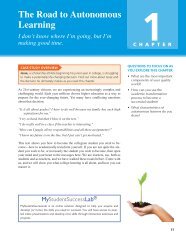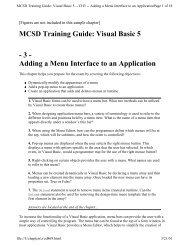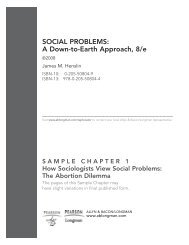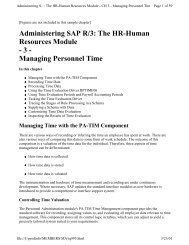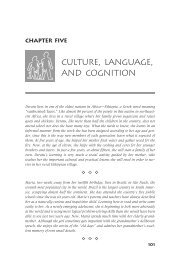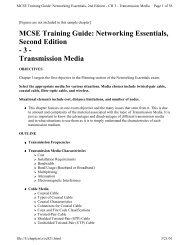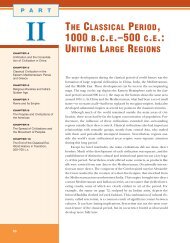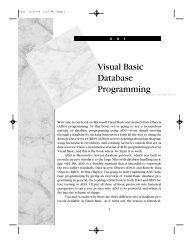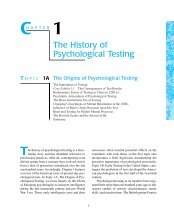Asian Philosophies JOHN M. KOLLER - Pearson
Asian Philosophies JOHN M. KOLLER - Pearson
Asian Philosophies JOHN M. KOLLER - Pearson
You also want an ePaper? Increase the reach of your titles
YUMPU automatically turns print PDFs into web optimized ePapers that Google loves.
KOLLMF01_0131951831.QXD 26/6/06 4:16 PM Page xvi<br />
xvi Introduction<br />
time, philosophical presuppositions and reflections have given rise to and<br />
guided these ways of practice.This intimate interrelatedness of philosophy and<br />
practice is one of the reasons why philosophy has been held in high esteem<br />
throughout Asia and why it is seen as relevant and important to everyday life.<br />
Because <strong>Asian</strong> philosophical traditions are different in important<br />
ways, the Western reader should attempt to consider them in their own<br />
contexts and in terms of their own merits. Often they do not fit neatly into<br />
modern Western intellectual categories, which tend to divorce thought from<br />
practice and philosophy from religion. Indeed, one of the main challenges<br />
to understanding <strong>Asian</strong> thought is see where it is like and where it is unlike<br />
Western thought.<br />
SOUTH ASIAN PHILOSOPHIES<br />
India is famous for the high regard it accords the seeker of wisdom and for<br />
its reverence and respect for wise persons. Three thousand years ago, the<br />
sages of India were pondering the questions, What is the Self? and What is<br />
the nature of ultimate reality? Pursuing these two questions, they came to<br />
the realization, twenty-five hundred years ago, that the innermost Self is one<br />
with the ultimate reality. The immediate practical problem arising from this<br />
discovery was that of how one could come to know and to realize this inner<br />
Self and thereby become one with the very essence of the universe. The<br />
theoretical problems raised by this discovery centered on the difficulty of<br />
relating the multiplicity and diversity of experienced reality with the sages’<br />
insight into the unity of all existence and the difficulty in ascertaining how<br />
knowledge of such an ultimate reality could be achieved. Reflection on these<br />
issues led to questions about the basis of morality, the nature and function<br />
of society, the means of valid knowledge, the principles of logic, the nature of<br />
the self, and the means of self-realization.<br />
As Indian thinkers reflected on these fundamental questions, they often<br />
disagreed with each other. Their differing insights and understandings led to<br />
the establishment of a variety of philosophical traditions, many of them continuing<br />
to this day. Although the Vedanta tradition is in agreement with the sages<br />
who declared innermost Self and ultimate reality identical, other traditions<br />
reject this vision of reality. Some traditions, like Nyaya and Vaisheshika, are<br />
frankly pluralistic, while others, like Sankhya and Yoga, are dualistic. The Jain<br />
and Buddhist traditions, though they disagreed with each in significant ways,<br />
both rejected the authority of the Vedas, and the existence of God, while<br />
emphasizing the importance of yogic discipline. The Carvakans, sometimes<br />
called Lokayatas, were materialists, denying the existence of God, soul, and any<br />
kind of life after death.<br />
Despite this diversity of philosophical views, there has been widespread<br />
agreement that the self-discipline of yoga is needed to achieve the total<br />
integration of life and to attain life’s highest goals. According to the Bhagavad<br />
Gita, an extremely influential Hindu text, this discipline is available to all<br />
persons when it is channeled through the activities of worship and devotion, the<br />
activities of work, and the activities of knowledge and concentration. From



